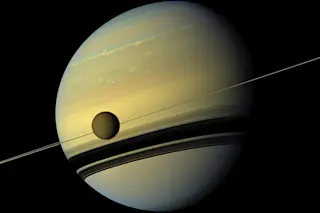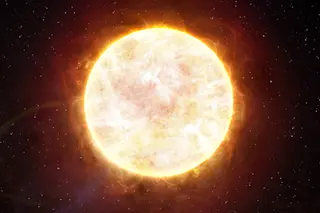Astronomers found an entirely , Saturn’s largest moon, this year: a ribbon of exposed bedrock ice that wraps nearly halfway around the satellite. This unique feature came into view thanks to a recently developed analysis technique never before used on Titan.
Researchers had previously spotted surprisingly diverse landscapes on the moon, from broad plains to sandy dunes. . Since the world is so cold, these features are made up of liquid methane and other organic compounds that slosh over a bedrock of solid, rock-hard ice. But it’s tough to get good observations of the surface, because the moon’s atmosphere is so dense and hazy.
So instead of examining individual pixels from images and scouring them for details and data, the researchers used a technique called principal components analysis (PCA). This lets them look at all the pixels in a given area, helping to spot larger trends in the landscape while ...















